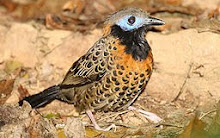(Photo by Trude Hurde by permission)
Yesterday, I drove 15 miles from my home in Tustin, California to see a miracle, a Snowy Owl that has been hanging around a Cypress neighborhood for a couple of weeks now. There she was, sleepily preening atop a suburban roof, looking down occasionally at the crowd of tripods, cameras, birders and neighbors delightedly watching her. I say "her" because the dark barring on her snowy chest, back and, particularly, wings, indicates a female, but it is possible that she is actually an immature male. This is just one of the many mysteries of how an Arctic species landed in the Southern California urban jungle.
At first sight, you are amazed at her sheer size--just about two and a half feet from talons to the top of the head. She has immense, yellow eyes; they are a clear indication that she hunts by sight as well as by hearing. Her seemingly blasé attitude toward the multitudes below her is unaccountable. What does this world look like to an apex predator, accustomed to hunting across the frozen tundra for lemmings and hares, nesting on snowy rises and enduring sub-zero temperatures? It is easy to anthropomorphize such a Muppet-looking bird and forget that she is a raptor at the top of the food chain in her own environment. Her species fly hundreds of miles in search of food, following rodent irruptions and exploiting the available food sources. Right now, given sufficient prey, she should be mating and brooding, but there are no other Snowy Owls here. Snowies don't interbreed with other species, so for this year, at least, she will remain alone.
The people below murmured together in wonder. They smiled and those who had brought children delightedly pointed her out. Cameras clicked constantly. One guy shot film from the roof of his van. Local news trucks turned up as did the police, politely but firmly, ordering everyone out of the street. One couple had come from San Francisco to see the owl, another from San Diego. Every time she moved or ruffled her feathers, the crowd gasped.
It is wonderful to see how engaged and thrilled people were at seeing the owl. It reminded me forcefully of how I came to be a birder myself. I was working in Atlanta in February 2000 when I started taking my lunch over to Power's Ferry along the Chattahoochee River instead of at my desk. While eating my sandwich, I would squint at the flocks of tiny, yellow-butted birds flitting through the trees above my picnic table. After a few days, I bought the world's cheapest pair of binoculars. I noticed enormous blue-gray birds standing guard in the reeds along the river, then furry brown, ratty creatures building nests of twigs right in the water. Next day, I bought a terrible field guide and a couple days after that, ran across a park ranger, who explained. At fifty years of age, I had finally seen Yellow-rumped Warblers, Great Blue Herons and Muskrats, all common species. In less than ten days, I was getting up in the dark to bird the Chattahoochee for an hour before going into work. I was hooked.
Twenty-two years later, I finally saw one of my nemesis birds, a Snowy Owl, not in Alberta or Alaska where I had searched previously, but almost in my backyard. She is a physical manifestation of the world of Nature that exists, often unseen, all around us. I hope that for some of those who flocked to see her, she will be their "Spark Bird" as the Yellow-rumped Warbler was mine. I wish that revelation to everyone. Happy New Year!


